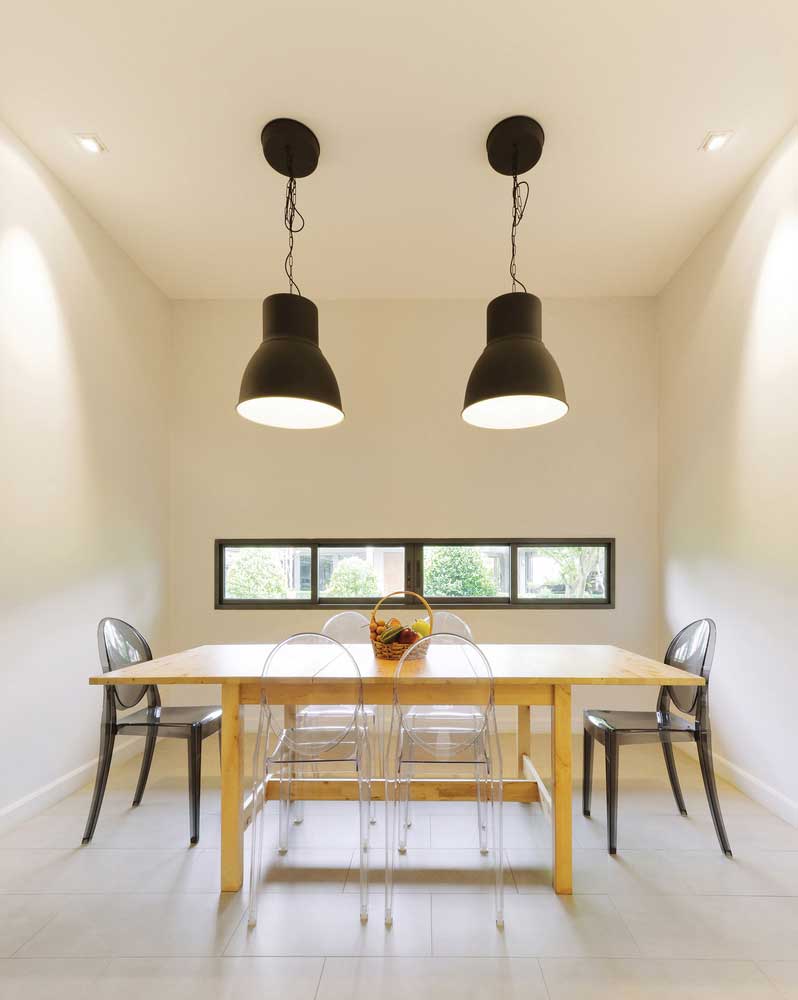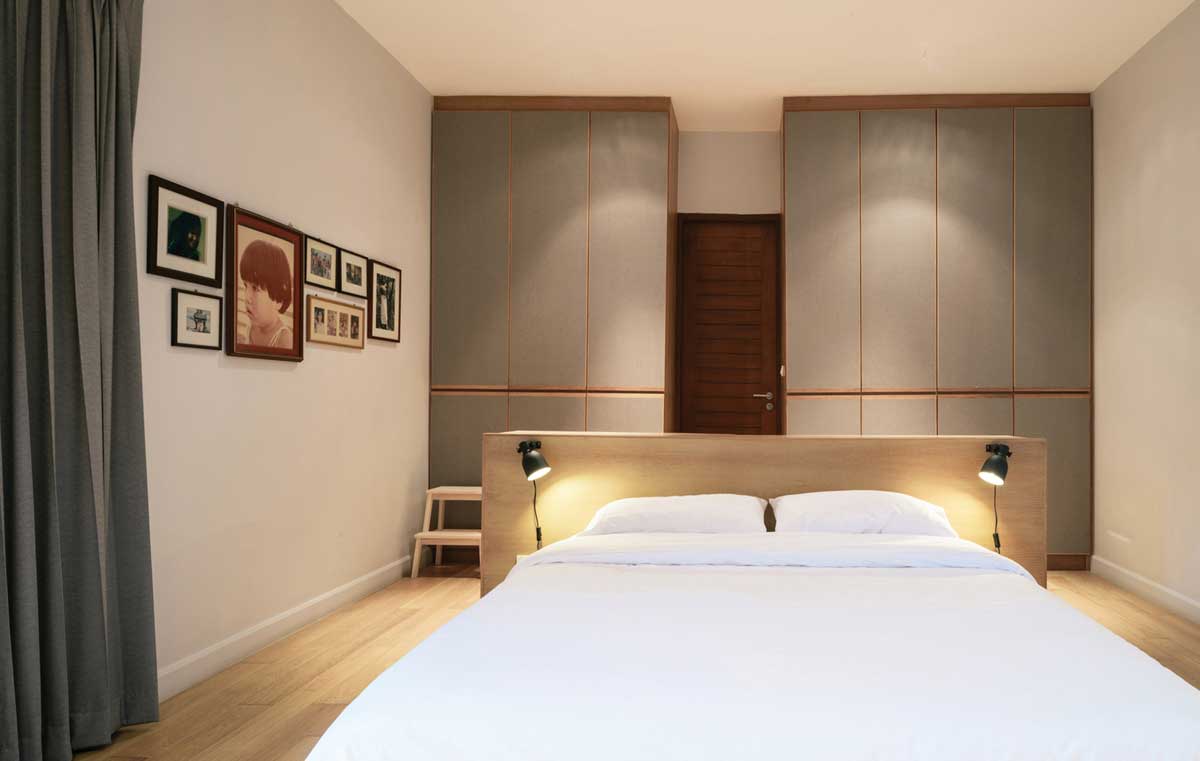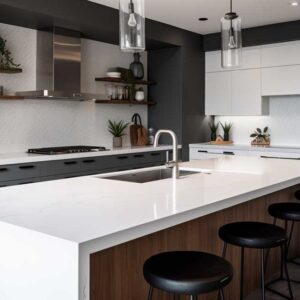In the evolving landscape of architectural design, the marriage of color and shape plays a pivotal role. The grey and white palettes, often associated with modern minimalism, have found a unique canvas in the form of triangular homes. Nestled in the heart of Thailand, one such masterpiece stands as a testament to this harmonious blend, redefining the boundaries of contemporary design.





The Timeless Appeal of Grey and White
Grey, often seen as a neutral shade, carries with it an aura of sophistication and elegance. When paired with the purity of white, it creates a visual symphony that resonates with both serenity and modernity. This combination, while simple, has the power to transform spaces, making them feel expansive and airy.
In the context of the triangular home in Thailand, this palette becomes even more significant. The sharp angles and unique geometry of the structure are softened by the muted tones, creating a balance that is both striking and harmonious.
The choice of these colors is not just about aesthetics. It reflects a deeper understanding of the interplay between light and shadow, especially in a tropical setting where the sun can be both a friend and a foe.
By opting for grey and white, the architects have ensured that the house remains cool, with the colors reflecting the harsh sunlight, while also creating a luminous interior ambiance.
Moreover, these colors provide the perfect backdrop for the natural materials used in the house, allowing them to shine in all their glory.


Triangular Architecture and Modern Design
The triangle, a shape that is both ancient and modern, has been reimagined in the world of architecture. Its bold lines and distinct geometry make it a favorite among architects looking to break the mold. In the Thai home, this shape takes on a new dimension, becoming a canvas for artistic expression.
The grey and white palette accentuates the triangle’s angles, highlighting its uniqueness while also blending it seamlessly with its surroundings. The result is a structure that stands out, yet is in perfect harmony with nature.
But why the triangle? Beyond its aesthetic appeal, this shape offers practical advantages. Its sloping roofs are perfect for rainwater drainage, a crucial aspect in tropical regions.
Furthermore, the triangular design allows for optimal ventilation, ensuring that the house remains cool even during the hottest months.
Lastly, this shape provides ample opportunities for innovative interior design, with its high ceilings and angular walls offering a unique spatial experience.


Embracing Natural Building Materials
In the world of contemporary design, there’s a growing emphasis on sustainability and eco-friendliness. The Thai triangular home embodies this ethos, with its use of natural building materials that complement its grey and white palette.
White oak, with its subtle grain and warm hue, features prominently in the interiors. Its natural beauty is enhanced by the soft grey and white tones, creating a space that is both rustic and modern.
The use of local materials, such as stone and wood, not only reduces the house’s carbon footprint but also ensures that it is in tune with its environment.
These materials, with their inherent textures and patterns, add depth to the design, making it feel grounded and organic.
Moreover, they offer practical benefits, from insulation to durability, ensuring that the house is not just beautiful, but also built to last.


The Future of Color and Shape in Architecture
As we look to the future, the interplay of color and shape in architecture is set to evolve further. The grey and white palette, with its timeless appeal, will continue to feature prominently, especially in designs that aim to merge modernity with nature.
The triangular shape, with its bold geometry, will inspire architects to push the boundaries of design, creating structures that are both functional and artistic.
In an era where sustainability is paramount, the emphasis will be on using natural materials that complement these colors and shapes, creating homes that are eco-friendly and aesthetically pleasing.
The Thai home stands as a beacon of this future, showcasing the endless possibilities that arise when color, shape, and material come together in perfect harmony.
It serves as a reminder that in architecture, as in art, it’s the finer details that make all the difference.


The Interplay of Light and Space
The magic of grey and white palettes in triangular homes is not just about aesthetics; it’s about how these colors interact with light and space. In the Thai home, large windows and open spaces allow natural light to flood in, casting soft shadows and creating a play of reflections.
The grey, being a neutral shade, absorbs and diffuses this light, ensuring that no corner of the house feels too stark or overwhelming. The white, on the other hand, acts as a canvas, reflecting the light and enhancing its luminosity.
This dance of light and shadow, enhanced by the home’s unique triangular structure, creates a dynamic living environment. Every hour brings a new spectacle, as the sun’s rays shift and change, painting the interiors with a myriad of hues.
Moreover, the open design ensures that there’s a seamless flow of air, making the spaces feel fresh and invigorating.
The choice of grey and white is, therefore, not just a design decision but a strategic one, aimed at creating a home that is in harmony with nature and the elements.


Sustainability and Design Choices
In today’s world, where the environment is at the forefront of global discussions, the choice of building materials and design elements plays a crucial role. The Thai triangular home stands as a testament to this, with its emphasis on sustainability and eco-friendliness.
The grey and white palette, while being aesthetically pleasing, also offers practical benefits. These colors, being neutral, do not fade easily under the harsh tropical sun, reducing the need for frequent repainting and maintenance.
Furthermore, the use of natural materials like white oak not only adds to the home’s beauty but also ensures that it has a minimal environmental impact. These materials are sourced locally, reducing transportation costs and carbon emissions.
The triangular design, with its emphasis on open spaces and natural ventilation, reduces the need for artificial cooling, further enhancing the home’s eco-friendliness.
Thus, every aspect of the home, from its colors to its shape, reflects a deep commitment to sustainability and responsible design.

The Cultural Significance of Triangular Homes
While the triangular shape might seem modern and avant-garde, it has deep roots in many cultures, including Thai architecture. Traditionally, triangular structures were seen as a symbol of stability and harmony, with the three sides representing the balance of nature, humanity, and the divine.
In the Thai home, this cultural significance is beautifully intertwined with modern design principles. The grey and white palette, while being contemporary, also resonates with traditional Thai aesthetics, which emphasize simplicity and elegance.
The use of natural materials, like white oak, further strengthens this connection to tradition, ensuring that the home, while being modern, is also deeply rooted in Thai culture and values.
This blend of the old and the new, the traditional and the contemporary, gives the home its unique character, making it a true architectural marvel.
It serves as a reminder that even in the world of modern design, there’s always room for tradition and cultural significance.

Conclusion
Grey and white palettes in contemporary triangular homes, as showcased by the Thai architectural gem, are more than just design trends. They represent a deeper philosophy, one that emphasizes harmony, sustainability, and cultural significance. As we move forward, it’s clear that such homes will continue to inspire and captivate, setting new benchmarks in architectural excellence.












